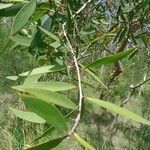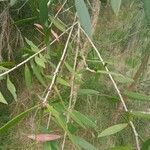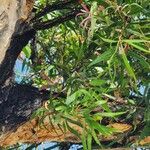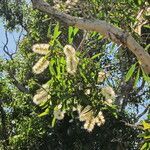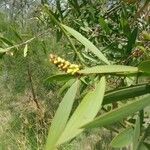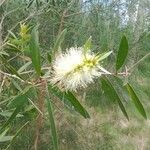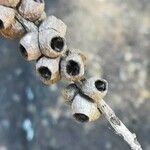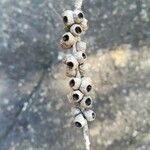A tree. It grows 12-25 m tall. The young shoots are whitish with silky hairs. The leaves are stiff and bluish and have a sharp point at the tip. There are 5 veins along them. The flowers are creamy-white and like bottle-brushes. The fruit are woody capsules about 4 mm across.
